Introduction
Artificial grass is immensely versatile; suitable for use in a wide variety of environments. However, different types of artificial turf may be better suited than others to some garden designs, certain purposes, or when aiming for a particular look. With that in mind, this buying guide sets out to explain what characteristics you should look for when specifying synthetic grass for different settings.

Synthetic Lawns for Homes
For homeowners who are interested in an artificial grass lawn, the most important attractions typically include not having to mow, weed or water the grass. Being low-maintenance is obviously common to all good synthetic lawns, but there are some important variables to consider before buying. The following sections examine some key questions and considerations.
How Much Use will the Lawn Get?
Parents with young, active children will know just how quicky a lawn can get muddy, and how frustrated children can become if they’re told they can’t play in the garden. For such families, an artificial lawn is a must, and it probably makes sense to prioritise durability.
One obvious feature that determines the durability of an artificial lawn is the materials from which it is made. This includes the fibres and the surface into which they are sewn. Grass fibres are made from different materials, such as nylon, polyamide (PA), polypropylene (PP) or polyethylene (PE), and different blends will confer different characteristics. A good, general purpose combination is a mix of polypropylene and polyethylene although it’s important to note that the proportions will differ between products and according to their intended use.
Shorter, denser piles with a high proportion of curled monofilaments will tend to be more resilient to heavy foot traffic, and these are commonly chosen for high-use areas such as playgrounds. However, longer grasses with a good mix of curled and straight monofilaments will often look more natural and will tend to feel softer underfoot, making them a better and more popular choice for many domestic lawns.
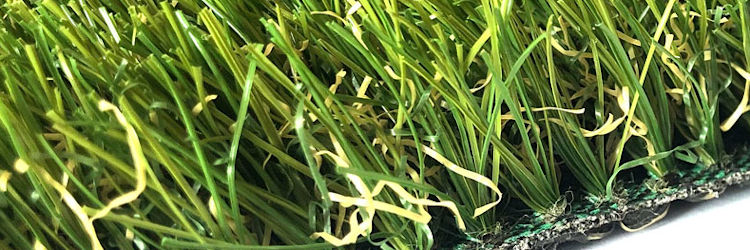
Another factor to consider is the stitch rate, which determines how many fibres are sewn into a given area of lawn; in short, how dense the turf appears. Stitch rates may be expressed in terms of stitches per linear metre, or stitches per square metre. They can vary considerably – between approximately 7,000/m² and 28,000/m² - but the higher rates will normally translate into denser, more hardwearing lawns.
A good artificial grass supplier should be ready to provide you with a technical data sheet that specifies the stitch rate and what materials are used, so don’t be afraid to ask.
How Much Sunlight will the Lawn Get?
Some gardens are more exposed to the sun than others. If yours sees a lot of direct sunlight, be aware that some lesser materials may degrade as a result of prolonged exposure to UV light. To eliminate that risk, talk to your supplier and make sure that your chosen artificial grass (including fibres and backing material) is UV-stabilised. This means that the product has been specially manufactured to offer years of trouble-free performance even in the sunniest of settings.
For added reassurance, check to see that the product complies with international standards. One that is recognised Europe-wide is the DIN 53387 Standard for the “artificial weathering and ageing of plastics and elastomers.” Again, ask for a data sheet or ask your supplier to confirm whether your chosen product complies.
Also, be aware that a reputable supplier / installer will typically recommend the application of silica sand (or similar) once the lawn is laid. Brushing sand into an artificial lawn helps to protect the pile and to keep it upright, but it also gives the backing material added protection against UV light. For this reason alone, it’s a worthwhile investment.
Pets and Artificial Lawns
An artificial lawn with a ‘pet safe’ label generally indicates that the product contains no lead or other potentially harmful substances. Dogs, cats and other pets may sometimes lick or attempt to chew artificial turf, so it’s important that it contains nothing that could make them ill.
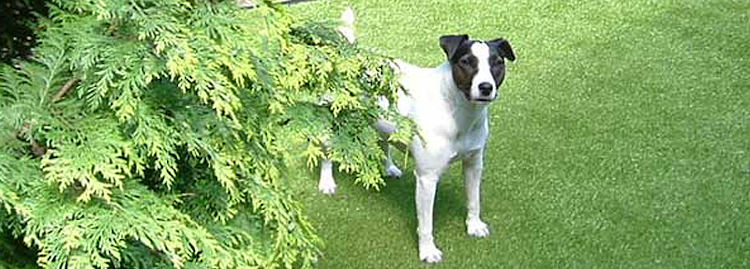
Most modern synthetic grasses are now pet safe, but it is sensible to check. A technical data should give a clear indication of whether the grass is free from toxins such as lead and cadmium.
Another relevant issue is drainage. Pets (either your own or those from neighbouring households) will sometimes relieve themselves outside, and this raises an important issue for buyers because it’s important that any liquid drains freely and quickly. This will help to eliminate the risk of odour and keep your lawn hygienic. Often, a short period of rain will be all that’s needed to keep a good artificial lawn fresh and clean, but in prolonged dry conditions a hosepipe can be used.
To check how effectively your intended grass drains, look for a water permeability figure, which is typically expressed in terms of “litres per minute per square metre” (litre/min/m²). Superior quality products will commonly drain at a rate of around 60 litres/min/m².
Appearance
Artificial grass can vary in colour, fibre length (referred to as the “pile-height”) and density. All of these attributes will make a difference to the appearance of a domestic lawn but the final choice is often a personal one.
Some grasses are long and lush; others shorter and more manicured. Many of the most natural looking grasses feature a mix of straight and curled monofilaments, as well as a mix of colours, to give the turf a more organic, less uniform appearance.
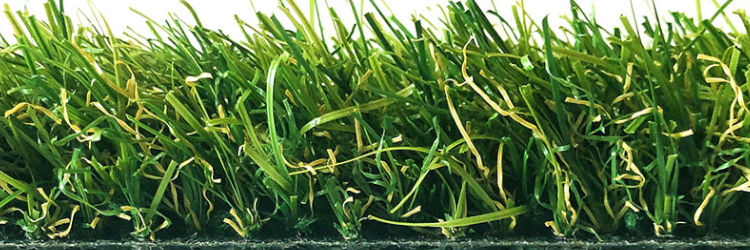
Your choice of grass will depend on the look you are trying to achieve, but it will usually be sensible to consider appearance and usage together. As a rule, most good quality, modern lawns will be suitable for the majority of garden and landscaping purposes, and the principal differences will be aesthetic.
Artificial Grass for Play Areas
In this context, play areas can include sites such as municipal playgrounds and areas used by schools and nurseries. Here, you can expect much heavier and frequent use than in an ordinary domestic environment, so the key factors will probably include:
Durability is partly a matter of material choice, together with proper installation and maintenance.
Shorter pile heights may be better suited for high-use areas, since longer fibres can flatten more quickly. A good artificial grass should spring back up again, particularly if it has been properly installed, but if a play area is likely to see near-constant use on some days, a shorter, denser pile will tend to maintain its appearance better.
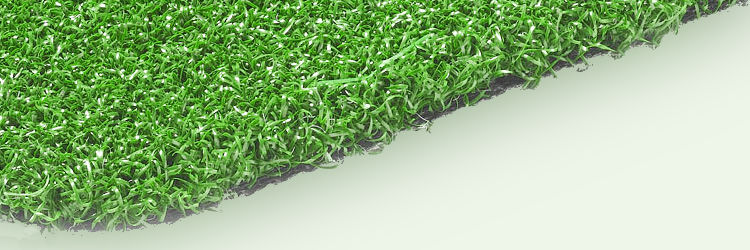
The trade-off with shorter-pile products is that they don’t feel quite so soft, but if ‘feel’ or safety are significant design issues, bear in mind that shock absorbing pads can always be laid underneath. A good shock-absorbing pad underneath the artificial turf will help to minimise fall-related injuries while also helping the turf to last longer. A reputable supplier will be able to advise you on the use of a shock-pad system and what thickness/grade to specify in order to cater for different critical fall heights (e.g. when installed around climbing frames etc.)
Cost is always an issue, of course, but a good supplier will be able to advise you on striking the best balance between appearance, durability and affordability. As a general rule, the better-quality artificial turfs will tend to last longer and their total lifespan costs may be lower overall.
Artificial Turf for Sports Venues
When it comes to specifying an artificial turf, many of the same criteria apply to sports surfaces as to play areas. Durability will be an obvious requirement; typically far more critical than issues such as colour and fibre shape.
Another important variable could be pile height. For example, a short, densely curled, very uniform grass will be better suited to putting greens, tennis courts and hockey pitches. However, a slightly longer length might be more appropriate for sports fields where rugby or football are played.
For the most hardwearing play surfaces, specialist turfs are available that have a short pile height (perhaps 10mm to 14mm), a high stitch rate, and a high proportion of curled filaments. These are commonly seen in settings such as playgrounds, public sports grounds and artificial putting greens.
The use of a good underlay will also be important – not just to protect players and the pitch, but also because it will affect different qualities of the playing surface – e.g. how high a ball will bounce.
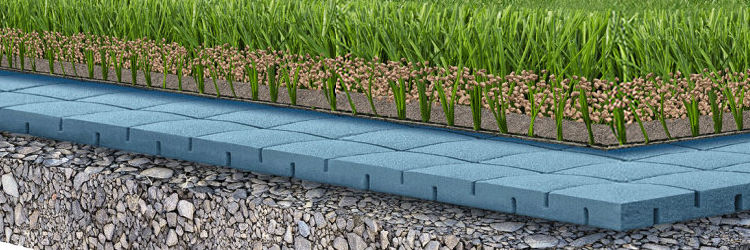
Fire Safety
Modern artificial lawns are generally very safe and present no significant fire risk. It is, of course, important to protect the turf against exposure to extreme heat and naked flame, but high heat will typically cause artificial grass fibres to melt or discolour rather than burn. That could still entail an unwanted repair bill, of course, so any such exposure should obviously be avoided.
In some settings, however, stringent fire safety controls may be called for, such as when specifying artificial grass for use on high-rise balconies, rooftop terraces or interior settings. Specialist grass products are available for use on projects that call for an accredited fire-tested system. This technical summary document notes that the current EU standard (EN 13501-01) for floor coverings measures both ‘spread of flame’ and smoke production. A rating of either Cfl-S1 or Bfl-S1 indicates that the product is flame-retardant and produces ‘little smoke’ so look out for these classifications if you’re choosing a grass for a fire-critical setting.
Bear in mind also that brushing silica sand into the artificial turf after installation will also have an additional fire-retardant effect. On its own, it won’t be enough to produce a certified fire-retardant system, but it will certainly promote greater resistance. The sand itself will not burn, of course, and it has an insulative, protective effect on the backing material beneath it. This is one of several reasons why the application of silica sand is a wise investment.
Pool Surrounds
An important consideration when specifying an artificial turf for use around a spa or swimming pool is whether the water is likely to be chlorinated. Repeated exposure to chlorinated water is bad for any natural lawn but it can also cause some artificial versions to degrade or discolour. If there’s a risk of exposure, choose a chemical-resistant product.
It’s also important to bear in mind slip risks. Water can make smoother surfaces hazardous, but artificial lawns can be a good choice here because they tend to be much safer than tiles. A product with a deeper pile can also be very comfortable to sit or lie on.
Other Uses
Artificial grass can, of course, have many other uses: on roofs and balconies, in retail settings, in exhibition displays and much else besides. If you have a question about a particular application, please contact us today for free advice.
![]()




